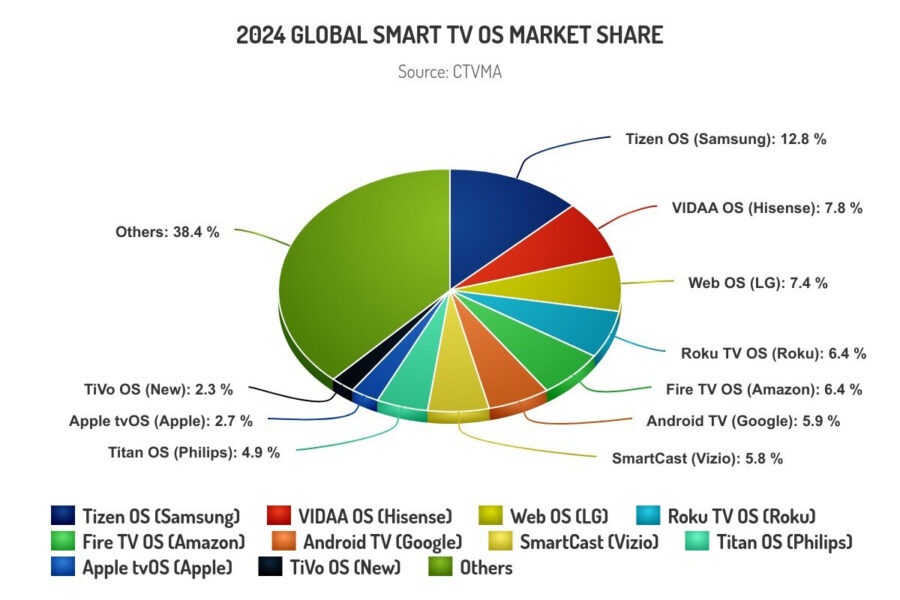BLOG

Author: Syed Shahid Mehdi
Date: 02 May 2025
The living room. Once the undisputed territory of linear television, it’s now a digital battleground. Connected TV (CTV) has exploded, bringing with it a fragmented landscape of operating systems vying for supremacy. Understanding this “CTV OS war” is no longer a niche concern; it’s a critical imperative for advertisers, content creators, and technology providers aiming to capture the attention – and wallets – of today’s viewers.
Let’s delve into the key players, the data points shaping the battlefield, and the actionable insights you need to navigate this dynamic environment.


Understanding market share is crucial. While exact figures fluctuate, current estimates paint a picture like this (as of Q1 2025):
Market share alone doesn’t tell the whole story. Engagement metrics and user demographics are equally important:

Here’s how you can leverage this understanding for strategic advantage:
For Advertisers:

For Content Creators:
For Technology Providers:

The CTV OS wars are far from over. We can expect further consolidation, new entrants, and evolving user behaviors to continue shaping the landscape. The rise of FAST (Free Ad-Supported Streaming TV) services and the increasing integration of CTV into the broader smart home ecosystem will add further layers of complexity and opportunity.
By staying informed about the key players, understanding the data points, and adopting a multi-faceted approach, businesses can not only survive but thrive in this dynamic battle for the living room. The winners will be those who can effectively navigate the fragmentation and deliver compelling experiences to the ever-growing audience of connected TV viewers.
SHARE THIS ARTICLE
Stay up to date on latest trend in video tech
Related Posts
ALL RIGHTS RESERVED © LOGITUIT 2025 ( A registered trademark of EMTARANG TECHLABS PVT. LTD.)
To provide the best experiences, logituit.com use technologies like cookies to store and/or access device information. Consenting to these technologies will allow us to process data such as browsing behaviour or unique IDs on this site. Not consenting or withdrawing consent, may adversely affect certain features and functions.